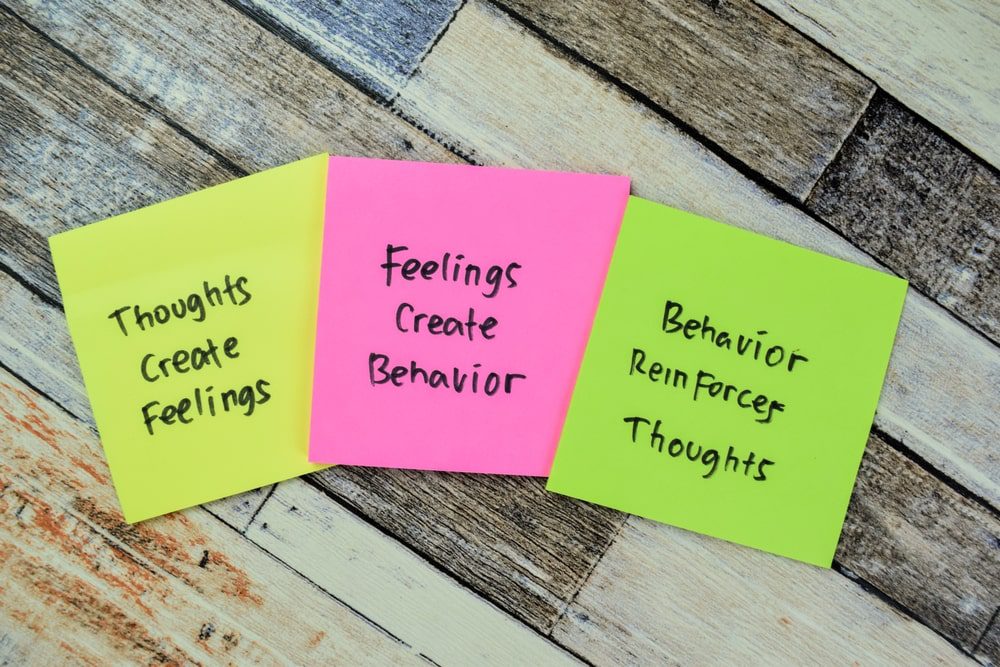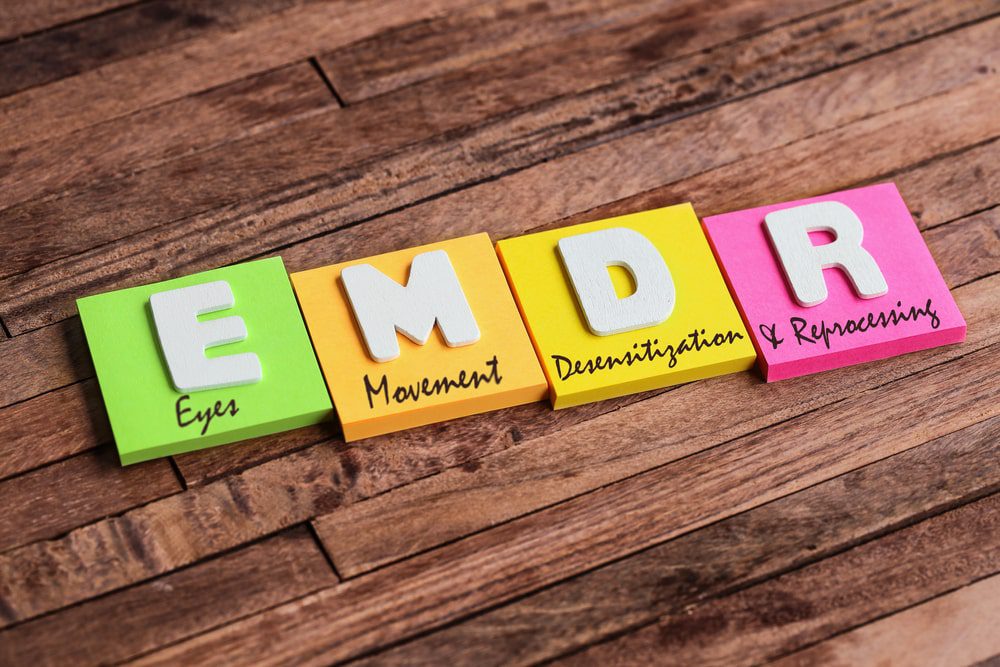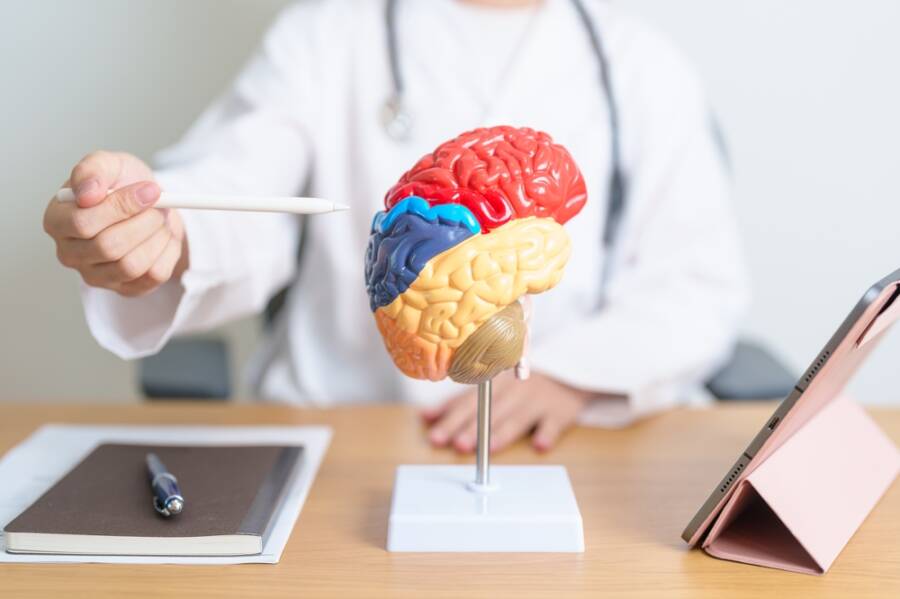Which are the most common types of therapy, and how do they work?
If you’re considering going to therapy, you’ll have numerous different types to choose from. In fact, some experts believe that there are more forms of therapy available right now than a person can even count. There’s no one-size-fits-all option, but a certain type could better suit you depending on your specific goals and needs.
With these factors in mind, we’ve rounded up the most effective and common types of therapy offered in the world today, along with the mental health conditions and situations they can help with. Let’s get started!

1. Cognitive-behavioral therapy
Compared to other types of therapy, cognitive behavioral therapy (CBT) offers a dynamic and more short-term therapeutic approach. With CBT, you explore the connections between recurring feelings, thoughts, and behaviors.
In practice, this type of therapy can look like doing worksheets that help you examine the data—your behaviors and thoughts—throughout the day. Your therapist may also adopt a more proactive approach, like challenging you on unhelpful cognitive assumptions or teaching you new ways of being.
As one of the most common types of therapy, CBT doesn’t aim at disregarding or suppressing negative thoughts or realities. Rather, CBT helps you understand how your thoughts and how you react to them affect you and acknowledge that you can adopt alternative perspectives.
This type of therapy can be an effective treatment for a variety of health concerns, such as anxiety, depression, insomnia, low self-esteem, seasonal affective disorder, substance use disorder, schizophrenia, and chronic pain.
2. Psychodynamic therapy
If you find the idea of traditional talk therapy interesting, psychodynamic therapy could be the right choice for you. During a typical session, you get to tell the story of your life and look into the impact of your past on your present. The therapist will ask relevant questions to help you become more self-aware.
According to experts, the goal is to mine your personal history to bring unconscious thoughts to the surface. As you start to better understand the link between deep-rooted motivations and patterns of behavior, you can use what you learn to fuel personal growth.
As one of the most common types of therapy, psychodynamic therapy can help with a variety of issues, including anxiety, depression, chronic pain, eating disorders, irritable bowel syndrome, and borderline personality disorder.
3. Cognitive processing therapy
Cognitive processing therapy (CPT) is one of the most common types of therapy and an evidence-based form of CBT. It’s widely recognized as an effective treatment approach for PTSD and related mental health conditions.
According to experts, people living with PTSD often adopt rigid beliefs about themselves, reality, and other people (for instance, “The world is a dangerous place”) because of what they have been through.
While these beliefs and ideas may be understandable, they can result in habits that make you feel worse—like avoiding social gatherings and pulling away from loved ones. Similar to other common types of therapy, CPT can help you analyze trauma-based beliefs, understand how they may distort the way you see the world, and work toward adjusting your perspective for a more fulfilling life.

4. Dialectal behavior therapy
Moving forward with the most common types of therapy, there’s dialectal behavior therapy (DBT). Originally developed to treat borderline personality disorder, it has since proven effective for many other health challenges, such as coping with the urge to self-harm or overwhelming moods related to trauma.
While CBT focuses on identifying and exploring your feelings and thoughts from the start, DBT begins with accepting them and finding coping mechanisms to manage highly distressing situations. The word “dialectal” refers to dealing with opposing forces.
The goal is to accept yourself as you are and embrace the power you have to change. For instance, you may learn new skills to control your emotions and prevent angry outbursts or practice mindfulness strategies to ride out intense emotional waves when certain events trigger you.
This therapy approach can help with PTSD, anxiety, depression, self-harm, borderline personality, binge eating disorder, bulimia, and substance use disorder.
Read on to discover other common types of therapy!
5. Prolonged exposure therapy
Prolonged exposure (PE) is another evidence-based therapy for PTS, phobias, OCD, and anxiety disorders. As one of the most common types of therapy, PE involves systematically exposing yourself to and confronting things you’ve been avoiding. Ultimately, you can recover the pieces of your life that anxiety or trauma took from you.
If you cannot bring yourself to get behind the wheel to drive again after a serious car accident or you find it hard to leave your house after witnessing a shooting, PE can help you confront your fears instead of avoiding them, contextualize them, and gradually expand your comfort zone.
Similar to other common types of therapy, PE’s process has multiple stages. It usually starts with listing your fears, then you and your therapist choose one that is moderately distressing, and then you start to progressively increase your exposure to it so you can build up your tolerance. This can involve discussing the triggers and taking real-life action, such as slowly reentering a space you’ve been avoiding.
6. Interpersonal therapy
If you feel like there may be a connection between issues related to your mood and your relationships, interpersonal therapy (IPT) provides a way to address both at the same time.
Originally developed as a treatment for depression, IPT is one of the most common types of therapy available. It’s a short-term therapeutic approach that recognizes the correlation between social issues, such as conflicts with loved ones or adjusting to changing roles, and mental health.
With the help of your therapist, you can reflect on these struggles, learn from them, and build stronger relationships with others—which can help you feel better, too. In fact, it has been shown that your mood can lift when your relationships improve.
Interpersonal therapy can help you cope with things like depression, relationship conflict, grief and loss, anxiety, bipolar disorder, major life changes like divorce or job loss, PTS, and eating disorders.

7. Eye movement desensitization and reprocessing therapy
Next on the list of common types of therapy is eye movement desensitization and reprocessing therapy (EMDR). This is another research-backed treatment option for PTSD that’s been gaining popularity. It involves a series of sessions in which you identify a traumatic memory, discuss it at length, and reprocess it with the help of your therapist.
What’s different with EMDR compared to other common types of therapy is that, while you’re going over the traumatic episode, you also focus on a sort of rhythmic stimulation that ping-pongs from left to right, such as an image or a sound. This is where the “eye movement” part comes into play.
According to experts, bilateral stimulation activates both sides of the brain, and by focusing on traumatic memories, you can work toward decreasing their emotional charge and changing negative beliefs about yourself.
8. Group therapy
If you’re open to connecting with people who genuinely understand what you’re going through, you should consider group therapy. Finding a community of individuals dealing with similar challenges and sharing your stories can be a balm for despair, shame, and loneliness.
Any group of people can feel discomfort and conflict with each other, but gentle approaches, open conversations, and an exchange of coping mechanisms can help you grow and heal together.
Unlike other common types of therapy, group therapy is different from peer support groups in that a certified group therapist moderates each session. They help build community, guide discussions, and address potential problems related to group dynamics, like clashing personalities and misunderstandings.
Group therapy can help with anxiety, depression, insomnia, gender identity, grief and loss, low self-esteem, life with chronic health conditions, trauma and PTSD, and substance use disorder.
Therapy is a good thing that can help you understand your thoughts and patterns better, as well as heal emotional wounds. There’s an interesting book that offers insights into the therapy process, and it’s really worth a read. Check it out here!
If you liked our article on the most common types of therapy, you may also want to read 10the Most Common Types of Trauma Explained.














